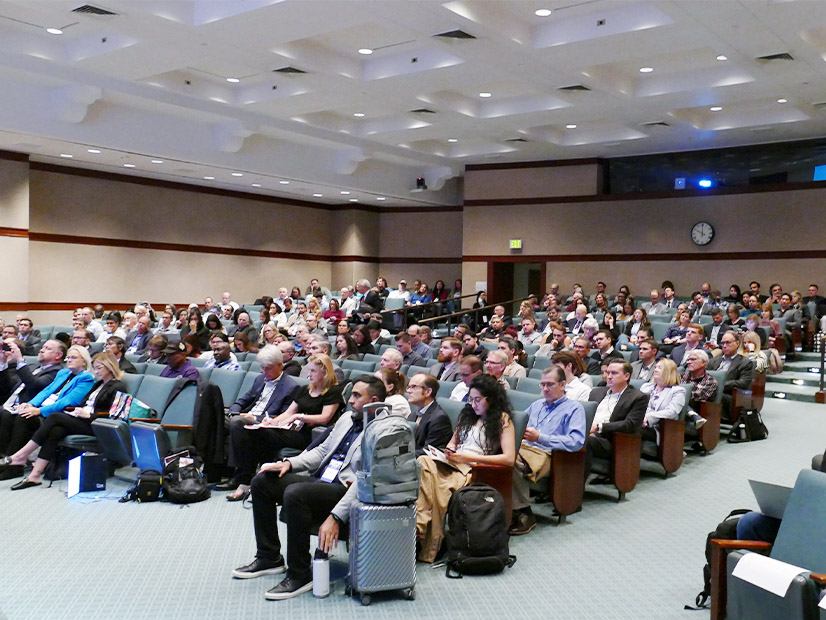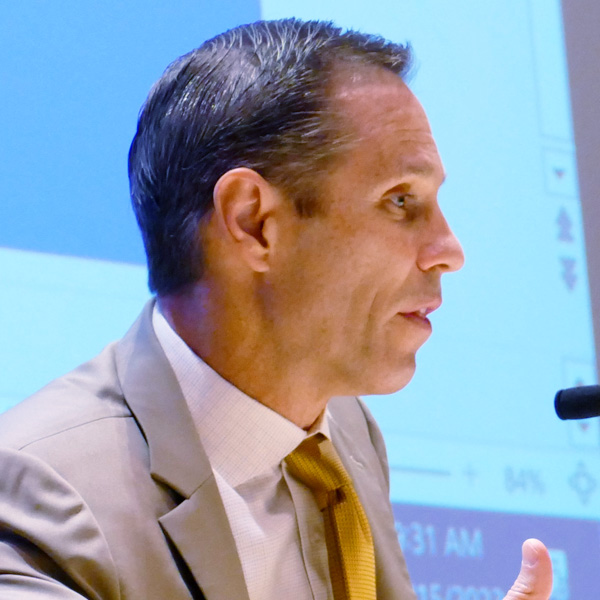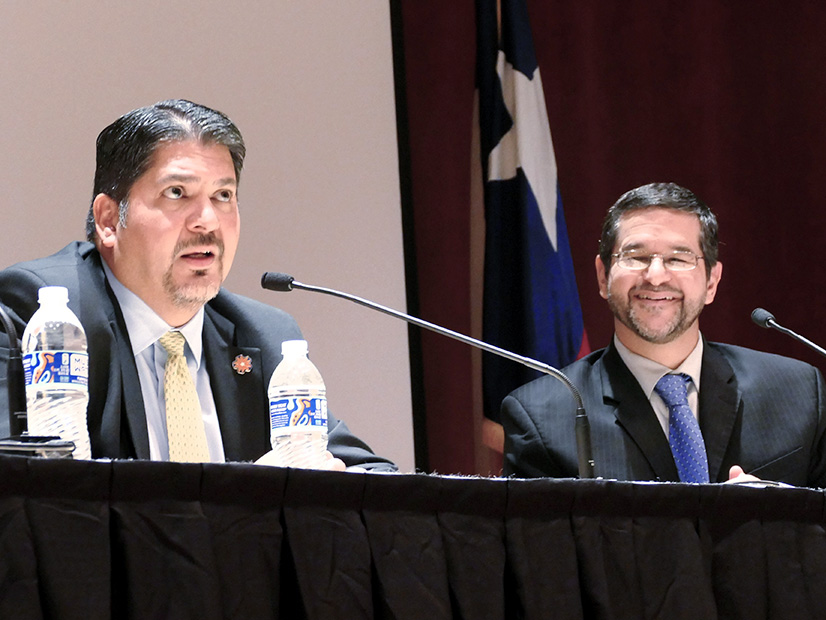The New Jersey Senate Environment and Energy Committee took testimony last week on a bill that would put into law the state’s goal to reach 100% clean energy by 2035, sparking business concerns that the state is overreaching and union fears that it could create jobs outside of the state.
Gov. Phil Murphy (D) put the target into effect by executive order, committee Chair Bob Smith (D) said at the start of a hearing on S2978 on Nov. 20. Murphy’s successor could simply change it by enacting their own executive order, said Smith, the sole sponsor of the bill. Making it the state’s renewable portfolio standard (RPS) would make it more likely to remain in effect.
“There are no guarantees that the next governor will be as green as the current governor,” Smith said. “An executive order is only a rule. … When state government is making decisions about investments, what we should be doing or not doing, you need a guiding principle.”
But Ray Cantor, senior lobbyist for the New Jersey Business and Industry Association (NJBIA), said he received the latest version of the bill only four days before and had not had time to analyze the implications. He urged the committee to hold off voting until a later date.
“We have concerns generally with setting artificial deadlines to meet artificial goals in a period of time that may not be practical or implementable,” Cantor said. “When you do that, you end up making decisions that may not be the most cost effective, the most technologically feasible and the best public policy. You’re driving decisions based on deadlines put in law and not necessarily what’s realistic economically or on the ground.”
The committee did not vote on the bill at the end of the five-hour hearing, most of it focused on S2978. Smith said he would review the testimony and adjust the bill, and the committee would vote on it Dec. 18.
It was one of two Smith-sponsored bills considered, but not voted on by the committee, that could bring sweeping changes to the state’s clean energy efforts. The second, S3992, would require the New Jersey Board of Public Utilities (BPU) to create a plan to modernize the state’s electric transmission and distribution system and would allocate $300 million to do so. Smith said at the hearing that he does not expect the bill to be ready by the time the legislative session ends in January and that it will be introduced in the next session.
New Clean Energy Certificates
The RPS bill states that New Jersey is on track to satisfy 75% of its annual energy use with clean energy by 2025 and 84% by 2030. Smith said the bill would help the state reach 100%.
“Rapidly increasing clean electricity generation to achieve 100% of retail sales of electricity in New Jersey by 2035 will help displace fossil-fueled electricity generation and thereby reduce greenhouse gas and co-pollutant emissions,” the bill says.
It outlines a mechanism to reach that goal by creating Clean Electricity Attribute Certificates (CEACs), each of which represents “1 MWh of generation from a clean electricity production facility whose electricity is produced in New Jersey or acquired through the PJM Interconnection.”
Electricity generation providers and suppliers would be certified and “procure and retire” CEACs to meet a set of goals: at least 80% matched by June 1, 2027; 85% by June 1, 2030; and 100% by June 1, 2035. The bill would also allow CEACs to be replaced by clean energy certificates generated by existing state programs, including solar renewable energy certificates, Zero Emission Certificates from nuclear plants and offshore wind Renewable Energy Certificates.
The bill also sets a goal of in-state clean energy sources meeting 65% of New Jersey’s electricity demand, with the remainder supplied from out of state. If the state does not appear ready to reach the 65% target, the bill allows the BPU to “procure additional electricity” out of state.
Investment and Jobs
Jesse Jenkins, an assistant professor and energy systems engineer at Princeton University, said a team he heads had modeled New Jersey’s clean energy plans, including the impact of S2978, and believes it would “help meet our climate goals, and all while maintaining affordability and reliability of New Jersey’s electricity supply.”
“The law would ensure more clean electricity would be generated in-state in 2035 than is generated by all resources —both fossil power plants and clean sources — today,” he said. “That ensures a steadily expanding market for clean energy, investment and jobs in the state. … We estimate that under the proposed law, New Jersey electricity customers would pay less for their electricity supply and 2035 than we did in 2019.”
The law would support 24,000 jobs building, operating and maintaining electricity generators, including in the solar and offshore wind sectors, Jenkins said. More than 90% of the subsidies provided by state programs would go to generators within New Jersey, supporting investments and jobs in the state, he added.
Jenkins said the bill would also keep the state’s three nuclear plants open and would “not require natural gas plants to retire until clean, reliable replacements are available.” Gas plants could remain open until 2045, so they could be “called upon by the grid operator to meet reliability needs, while substantially reducing their generation overall and therefore their pollution,” he said.
Artificial Deadlines
But NJBIA’s Cantor said he believed gas-powered plants would be used for far more than just providing “reliability” services for when renewables could not cover demand. He argued that the grid is not ready for the amount of new clean electricity proposed in the bill. And he said NJBIA has concerns that the jobs created may actually be out of the state.
“If we don’t have the infrastructure to be able to hook up to solar developments, we’re really just driving those jobs, money, everything else out of state,” he said.
Jennifer Mancuso, director of government affairs for NJ LECET, a labor management cooperative that is part of the New Jersey Laborers Union (LIUNA), said the organization is also concerned about where the new jobs would go. She said LIUNA agrees with the state’s decarbonization goals but is concerned by the “considerable discretion” the legislation gives the BPU to seek energy out of state if New Jersey does not meet the 65% goal of in-state clean energy production.
Eric Miller, director of New Jersey energy policy for the Natural Resources Defense Council, said the committee should consider the impact of not adopting the legislation and where it would get its energy in that scenario. New Jersey is currently an energy importer and so already relies on out-of-state sources to meet demand, in large part, he argued, because fossil fuel-fired power is more expensive in the state.
“But for policies like this legislation that we’re considering, we would produce even less electricity in New Jersey,” he said. “[In] a purely competitive market, we buy it from PJM, almost every time. The only way to shift that needle back into New Jersey is through policies like this legislation.
“With this legislation, we could be a clean energy powerhouse.”




